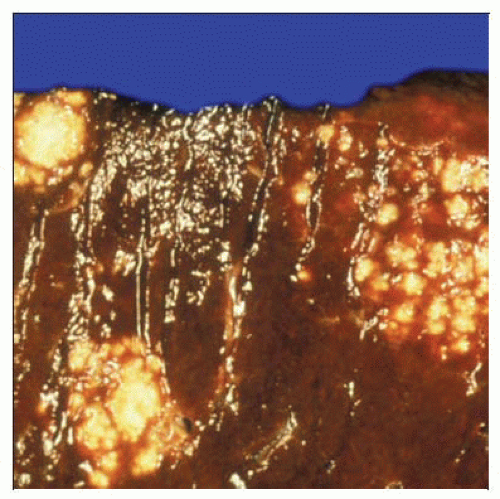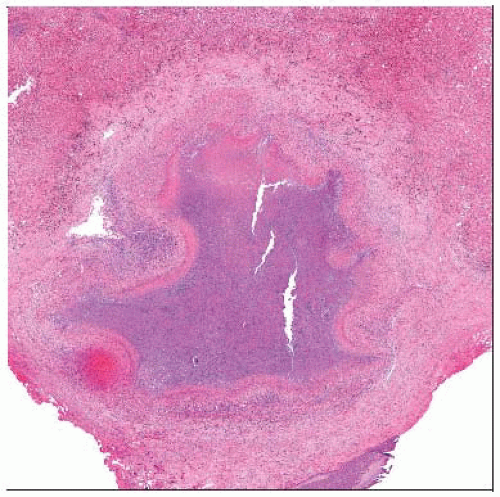Candidiasis
Laura Webb Lamps, MD
Key Facts
Terminology
Candidiasis is most common disseminated fungal infection in immunocompromised hosts
Rarely seen in immunocompetent patients
Macroscopic Features
Yellow-white nodules
Usually multiple
Microscopic Pathology
Typical inflammatory reaction is granulomatous
Frequently with suppurative/necrotic center
Mixture of budding yeast, hyphae, and pseudohyphae
All are GMS, PAS positive
Diagnostic Checklist
Fungi can sometimes be speciated by morphology, but culture is gold standard
TERMINOLOGY
Definitions
Infection of liver by Candida fungus
Candidiasis is most common disseminated fungal infection in immunocompromised hosts
Liver involvement is common in disseminated infection
ETIOLOGY/PATHOGENESIS
Infectious Agents
Candida species
Candida albicans most common
Endogenous commensal that is part of normal flora of GI tract, mouth, respiratory tract, vagina
Other pathogenic Candida include C. tropicalis, C. parapsilosis, C. krusei
Saprophytic yeasts present in both humans and environment
Candida (Torulopsis) glabrata
Normal flora of skin, GI tract, GU tract, respiratory tract
Patients with hepatic infection almost always immunocompromised
Stay updated, free articles. Join our Telegram channel

Full access? Get Clinical Tree




